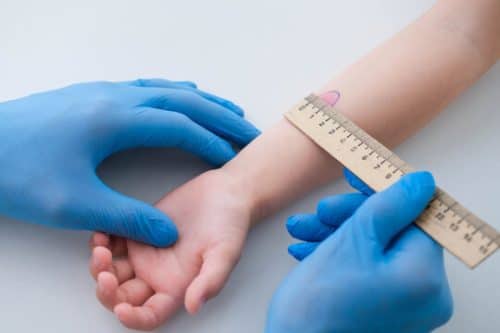
The Mantoux tuberculin skin test (TST) is commonly used by healthcare professionals to detect tuberculosis (TB) infection and is the test we perform at Summit Health. In this post, we will delve into how the Mantoux TST works at Summit Health, including the process of an initial appointment and the subsequent follow-up reading appointment.
What is the Mantoux Tuberculin Skin Test?
The Mantoux TST is a test used to determine if an individual has been exposed to the bacteria that cause tuberculosis. It involves injecting a small amount of purified protein derivative (PPD), a substance derived from the TB bacterium, just beneath the skin of the forearm. At Summit we use a product called “Tubersol”. After a specific waiting period, a healthcare professional will examine the injection site for any signs of a reaction.
The Initial Appointment
At Summit Health, if you have been recommended to undergo a Mantoux TST, you will be scheduled for an initial appointment. During this appointment, a nurse will explain the procedure and its significance, and address any questions or concerns you may have. They will also take your medical history to assess any potential risk factors or contraindications.
The nurse will start by cleaning the inner forearm with an antiseptic solution and then administer the PPD injection just beneath the skin’s surface. The injection is typically painless, but you may experience a slight prick or stinging sensation.
The Follow-Up Reading Appointment
After the injection, you will be advised to refrain from touching or scratching the injection site. It is crucial to return to one of our clinics for a follow-up reading appointment within the designated time frame, usually between 48 and 72 hours after the injection. This follow-up appointment is essential to accurately interpret the results of the Mantoux TST.
During the reading appointment, a nurse will examine the injection site for any signs of a reaction. They will measure the size of the raised area, known as an induration, not to be confused with just general redness or irritation. The diameter of the induration will help determine the presence or absence of a positive reaction.
Interpreting the Results
The size of the induration and the individual’s risk factors will dictate the interpretation of the Mantoux TST results. A positive reaction does not necessarily indicate active tuberculosis but signifies exposure to the bacteria at some point. Further medical evaluation, such as a chest X-ray or additional testing, may be recommended to confirm the presence of active infection or latent TB.
Conversely, a negative reaction typically indicates the absence of tuberculosis infection. However, false negatives can occur, especially in individuals with compromised immune systems or recent exposure to the bacteria. If symptoms of tuberculosis persist, despite a negative Mantoux TST result, it is important to consult your doctor for further evaluation.
If you are looking to get a TB Skin Test Done, you can book an appointment online and can view our TB Skin Test pricing page to learn more
